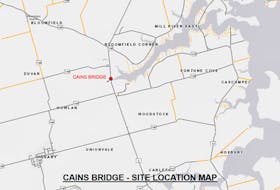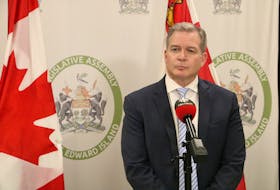Prince Edward Island’s issuer and long-term debt ratings have been upgraded from “stable” to “positive,” says DBRS Ltd.
DBRS also confirmed P.E.I.’s issuer rating at A (low), long-term debt rating at A (low) and short-term debt rating at R-1 (low).
The trend on the province’s short-term debt rating remains stable.
DBRS says it changed the trend to positive because of the sustained improvement in the provincial credit profile.
“The province has reported balanced operating results in each of the last two years and appears credibly committed to maintaining balanced budgets through the medium term,” said the agency. “Combined with a relatively strong economy, the improved budgetary results have resulted in the provincial debt burden declining. DBRS expects the debt-to-gross domestic product (GDP) ratio to continue to fall through the medium term. If these trends are sustained over the next 12 to 18 months, DBRS is likely to upgrade the province’s issuer rating and long-term debt rating to ‘A.’”
The P.E.I. government maintained a balanced budget for a second consecutive year in 2017–18, and has projected a surplus of $1.5 million. The result was consistent with the budget forecast and the prior-year result.
On DBRS’ adjusted basis, the result equates to a deficit of $35.6 million, or 0.5 per cent of GDP, which is among the smallest of the Canadian provinces.
Economic growth in the province has been relatively strong in recent years, supported by exceptional population growth. With this population growth expected to continue, economic activity is expected to remain relatively strong but may moderate over the medium term.
DBRS said the province’s 2018 budget remains balanced, though spending is rising relatively quickly in light of growth in equalization and targeted federal transfers.
“The budget not only provides significant funding to address population-related pressures in core ministries but also announced a number of measures that appear to preface an early election call by the premier,” said DBRS.
With rising capital investment, the deficit is estimated to be $56.5 million, or 0.8 per cent of GDP on DBRS’ adjusted basis.
The agency predicts that its adjusted debt burden will fall modestly to 39.2 per cent of GDP as at March 31, 2019, and with balanced budgets and declining capital investment, the DBRS-adjusted debt-to-GDP ratio should continue to fall through the medium term, potentially reaching 37 per cent in 2020–21.
A positive rating action is likely over the next 12 to 18 months if the outlook for budgetary results and debt persists. DBRS says it could change the trend to stable if the province’s fiscal and debt outlook deteriorates.









